From the Resene decorating blog
Choosing the right lighting for your home.
Lighting can make or break your room scheme. Lighting can diminish minor surface imperfections present on walls and ceilings when used carefully. A hastily planned lighting scheme can have the opposite result accentuating the same imperfections that you are trying to hide. For example, light striking the surface of a wall at a low angle (such as side lighting from surface mounted light fixtures) exaggerates surface imperfections. In contrast, light striking the wall at more or less right angles minimises surface imperfections. Harsh lighting can be minimised through carefully planning your lighting requirements at the start of your project.
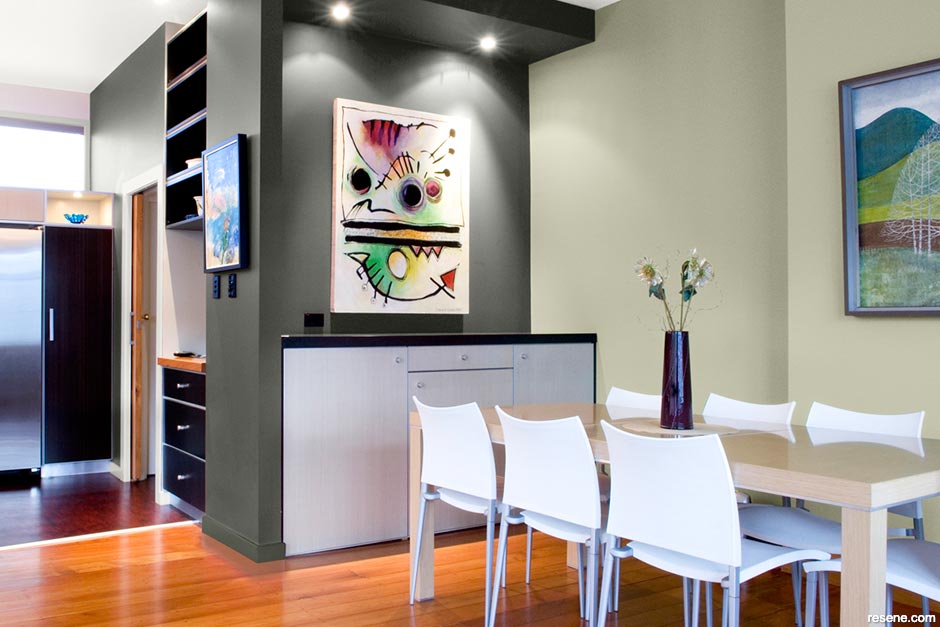
There are no right or wrong answers, but it pays to keep the following in mind as you work through your lighting plan:
To minimise the appearance of surface irregularities the following is recommended:
Wash lighting accentuates specific colours, making them appear richer. Recessed lighting fixtures placed correctly will wash over a wall creating dramatic light and shadow effects. Use spotlights sparingly. A spotlight focussed on a fixed point on the surface creates a hot spot and distorts the finish colour. Softer diffused lighting can be achieved through the use of tinted glass, net curtains, blinds, well chosen lightshades and soft tone lightbulbs.
Bathrooms are very practical rooms, so your lighting should reinforce this. Lighting near the mirror and hand basin is a good idea to provide adequate light for tasks such as shaving, hair styling and make-up application. In general, bathrooms are painted light reflective colours and so with the addition of the mirror, less lighting may be required than expected.
Lights that emit light as well as heat may provide comfort in the cold winter months. Generally these lights should be used as a feature in the middle of the room so that they are unlikely to be touched. Avoid fussy light fittings as they will be difficult to clean once moisture and air contaminants start to settle.
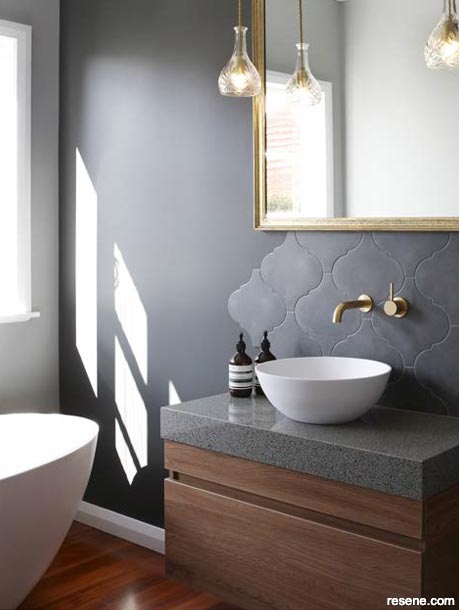
To view more of this project see "Practical and pretty."
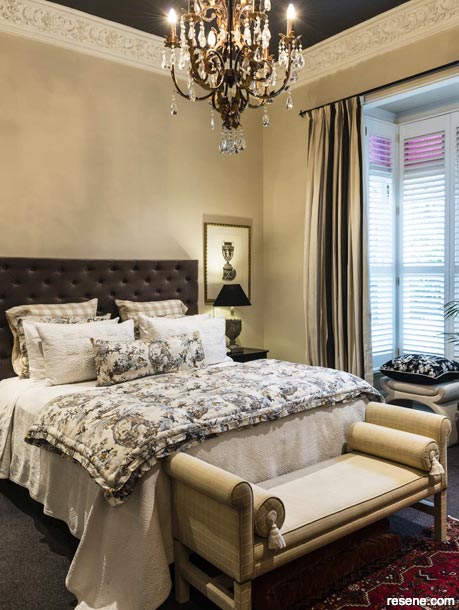
To view more of this project see "Forever young."
A dimmable central pendant light complemented by bedside lighting is recommended. Remember that wall lights will restrict furniture placement so keep this in mind before placing too many wall lights. Bedrooms require a background light with other types added, if needed, to provide accent and decorative illuminance. Much of the time in a bedroom is spent lying looking at the ceiling, so make sure any central lighting does not glare into your eyes.
Children grow up faster than you think, so in children's bedrooms it pays to install flexible lighting that can develop as they do. Dimmers and bedside lighting are recommended. For younger children a night lamp may provide reassurance in the dark hours. Make the most of safety plugs in the bedrooms of young children. Plan to add task lighting to the room if you install a working desk in the room.
With eating in mind, the dining room table is the focal point of your dining room, so lighting should be designed to highlight this area of the room. Pendant fittings are a popular choice to provide table light and act as a room feature. General lighting should be controlled with a dimmer to set the mood. Special collections or features can be highlighted but should not detract from the table. If your dining room is dark, heavily textured or patterned, it will reflect less light so more artificial lighting may be required. Install a dimmer on general lighting so that you can have maximum light on a family dinner and perhaps soften the lighting for an intimate dinner party.
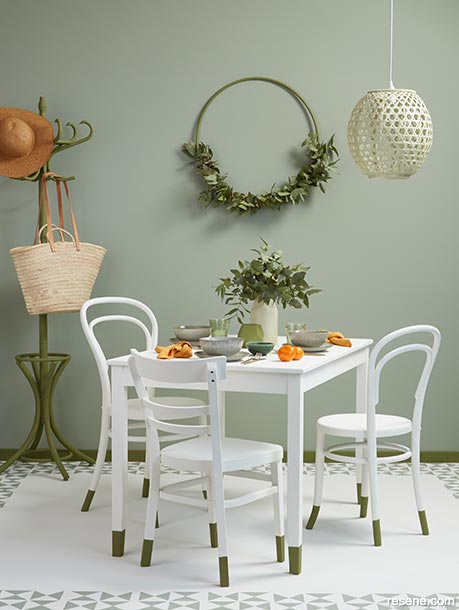
To view more of this project see "Divine dining."
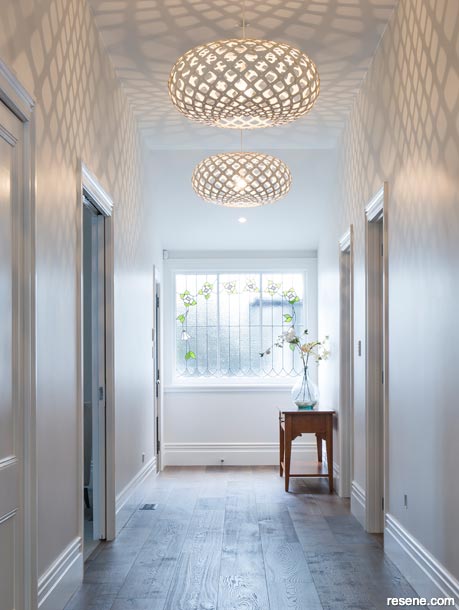
To view more of this project see "How light affects colour."
Hallways give an important first impression, acting as a picture frame for the remainder of the house. Like opening a present, the hallway should offer a hint of what is to come on further house exploration. Lighting should offer a warm welcome, inviting visitors into your home and subtly guiding them to their next destination, such as your living room. Highlight any feature pictures or collections through wall or ceiling mounted lighting. Freestanding lighting is generally best avoided as it may be a safety hazard when house members are wandering around at night without lighting or in times of emergency.
There is nothing worse than walking into a dark gloomy hallway from bright sunshine outside. The transition can be uncomfortable to the eyes, which must adjust to the depleted available light very rapidly. The use of hallway dimmers can give you more flexibility to adjust your hallway lighting to the natural lighting in the exterior environment.
Stairs are a definite safety hazard in any home, so when planning lighting, safety should be the number one criteria. This is one area that a dimmer is not recommended. All areas must be well lit, and you may even wish to consider using low wall lights to highlight the stair treads. Avoid using strong spotlights as they can create hot spots and glare. Interest can be added to the stairwell area safely with a single pendant light, provided the bulb intensity is sufficiently strong to light the area.
With an ever increasing reliance on technology, plan for plenty of power points. This will enable you to move your equipment and lighting around to suit the work at hand. Halogen lamps are versatile and provide the best type of light when reading and writing. Be careful when lighting around a computer – light reflecting off a computer screen can cause eye strain. Install task halogen lighting for each work activity to provide a shadow-free environment ideal for reading and writing.
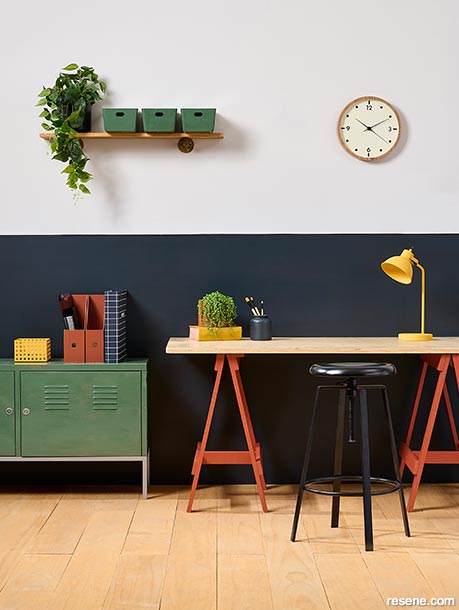
To view more of this project see "Work it."
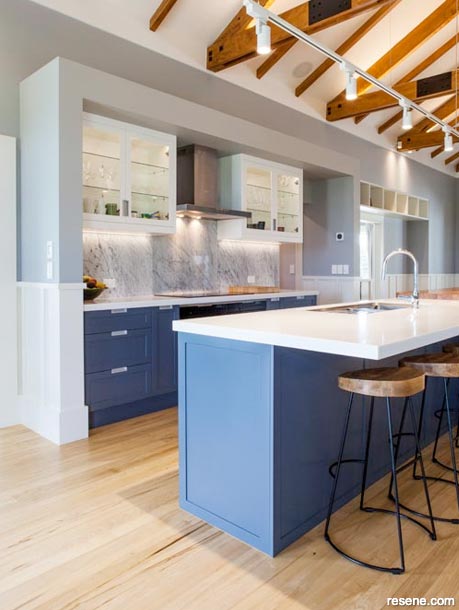
To view more of this project see "Decorating your kitchen."
The kitchen is one of the most functional rooms of any home so the main focus should be on providing shadow-free task lighting for each work surface. Kitchens are considered wet areas due to the predominance of steam and moisture. Use simple light fittings as they will be easier and quicker to clean. Save detailed light fittings for areas such as dining rooms where they will be appreciated and less subject to steam. Maximise any natural light that is available, ensuring that you have a way to filter out some of the natural light on bright sunny days. On a hot summer day with the oven and stove emitting heat there is nothing worse than being bathed in direct sunlight while you are trying to prepare a meal. Install lighting with different circuits and use dimmers.
Living rooms are used for a variety of reasons, therefore make sure your lighting is flexible, generous and varied. Draw attention to feature areas, such as special pictures, collections, feature walls or fireplaces. Install variable control switches so you can vary the atmosphere, and use different circuits so that selected areas of lighting can be employed as required.
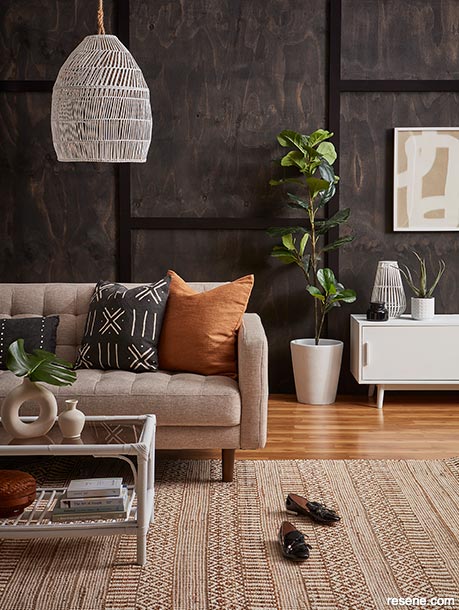
To view more of this project see "Steeped in drama."
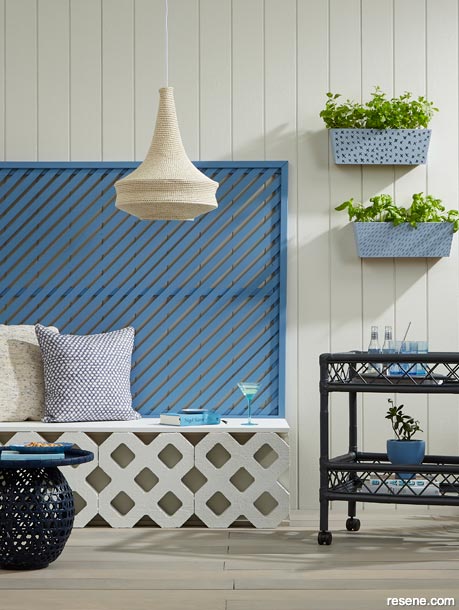
To view more of this project see "Appealing winter outdoor area."
Outdoor lighting has a number of uses, enhancing your garden as well as making it safer and more secure at night. Gardens are an ever-changing environment, so make sure lights are flexible with lots of wiring so that they can be moved around to accent garden features and as plants grow. A series of well placed low-wattage light fittings is usually the best idea to achieve the desired result.
Install automatic security lights on pathway areas so that these areas are automatically illuminated at night by movement.
When planning outdoor lighting, don't forget you will need to regularly change the light bulbs, so make sure all lighting is accessible regardless of the season and the growth of the garden. Lights should be installed at a 45-degree downward angle to avoid creating glare.
December 04, 2010
Visit your local Resene ColorShop for expert advice and all the products and accessories you need to make the most of your home.
Book a colour consult | Ask a Colour Expert | Ask a Paint Expert
Resene's decorating blog
Paint your home beautiful! Discover the latest decorating trends, tips and colour news.
![]()
Previous «
Kids Colour
![]()
Blog home
View the latest trends, tips and news
![]()
» Next
What makes a good home?